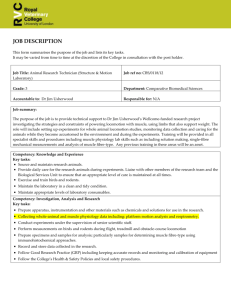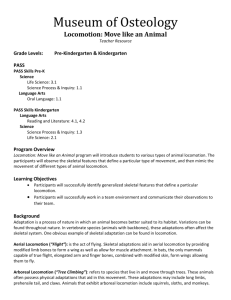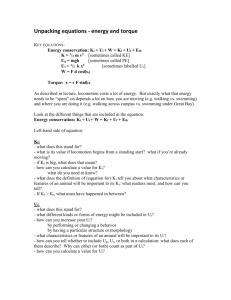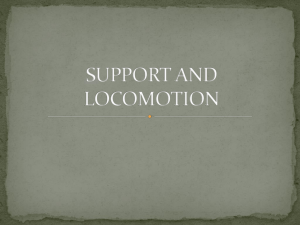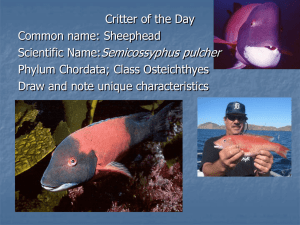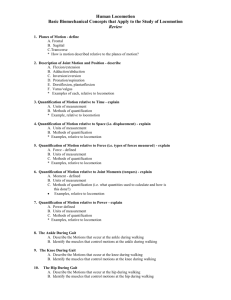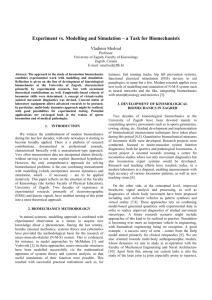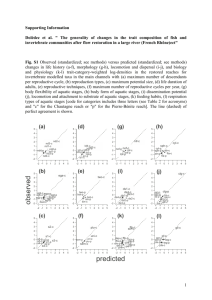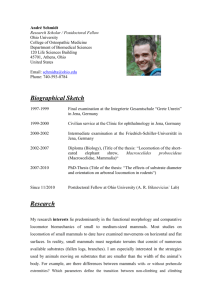Locomotion and Skeletal Adaptation
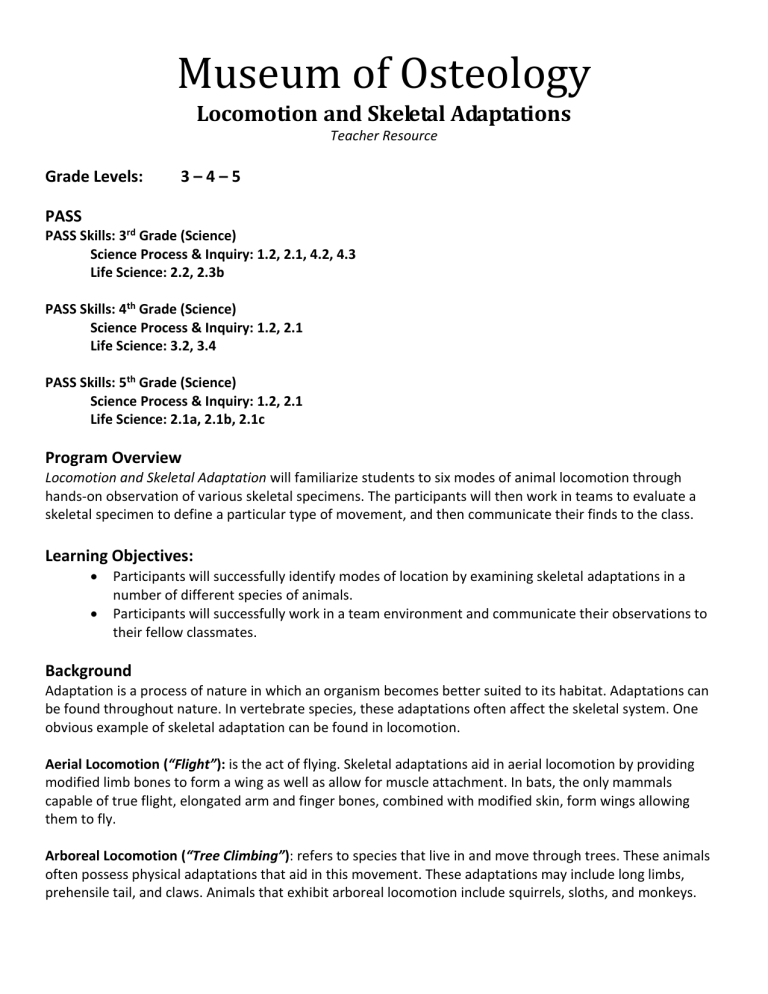
Museum of Osteology
Locomotion and Skeletal Adaptations
Teacher Resource
Grade Levels: 3 – 4 – 5
PASS
PASS Skills: 3 rd Grade (Science)
Science Process & Inquiry: 1.2, 2.1, 4.2, 4.3
Life Science: 2.2, 2.3b
PASS Skills: 4 th Grade (Science)
Science Process & Inquiry: 1.2, 2.1
Life Science: 3.2, 3.4
PASS Skills: 5 th Grade (Science)
Science Process & Inquiry: 1.2, 2.1
Life Science: 2.1a, 2.1b, 2.1c
Program Overview
Locomotion and Skeletal Adaptation will familiarize students to six modes of animal locomotion through hands-on observation of various skeletal specimens. The participants will then work in teams to evaluate a skeletal specimen to define a particular type of movement, and then communicate their finds to the class.
Learning Objectives:
Participants will successfully identify modes of location by examining skeletal adaptations in a number of different species of animals.
Participants will successfully work in a team environment and communicate their observations to their fellow classmates.
Background
Adaptation is a process of nature in which an organism becomes better suited to its habitat. Adaptations can be found throughout nature. In vertebrate species, these adaptations often affect the skeletal system. One obvious example of skeletal adaptation can be found in locomotion.
Aerial Locomotion (“Flight”): is the act of flying. Skeletal adaptations aid in aerial locomotion by providing modified limb bones to form a wing as well as allow for muscle attachment. In bats, the only mammals capable of true flight, elongated arm and finger bones, combined with modified skin, form wings allowing them to fly.
Arboreal Locomotion (“Tree Climbing”): refers to species that live in and move through trees. These animals often possess physical adaptations that aid in this movement. These adaptations may include long limbs, prehensile tail, and claws. Animals that exhibit arboreal locomotion include squirrels, sloths, and monkeys.
Aquatic Locomotion (“Swimming”): as well as semi-aquatic locomotion, describes an animal’s movement in the water. Many species that live in the water possess aquatic locomotion to aid in their survival. Limbs modified into flippers are one of the most common skeletal adaptations found in aquatic species. Some animals exhibiting aquatic locomotion include dolphins, sea turtles, and penguins.
Cursorial Locomotion (“Running”): is the type of locomotion most terrestrial animals use to move about. This form of locomotion primarily refers to running. Many species exhibiting this type of movement have developed skeletal adaptations such as longer limbs, the reduction of toes, modification of the feet and development of hooves. Some cursorial species are dogs, cats, horses, and gazelles.
Fossorial Locomotion (“Digging”): as well as semi-fossorial locomotion refers to the modified movement of animals that dig and live underground. These species often have modified limbs to aid in digging, as well as, compact bodies and rudimentary eyes. Some fossorial species include gophers, moles, and mole rats.
Saltatorial Locomotion (“Jumping”): animals that use hopping or jumping to move. Species utilizing this form of locomotion have evolved large, muscular hind limbs and often have reduced forelimbs. Some saltatorial species include rabbits, kangaroos, and gerbils.
Vocabulary
Adaptation: a process of nature in which an animal becomes better suited to its habitat
Aerial Locomotion (“Flight”): is the act of flying.
Arboreal Locomotion (“Tree Climbing”): applies to animals that live in and move through trees
Aquatic Locomotion (“Swimming”): describes an animal’s movement in the water
Carnivore: animals that primarily eat meat.
Cursorial Locomotion (“Running”): most land animals move about using this type of locomotion
Fossorial Locomotion (“Digging”): movement of animals that dig and live underground
Habitat: soil, water, climate, plants and animals of a particular ecosystem
Herbivore: animals that primarily eat plants.
Saltatorial Locomotion (“Jumping”): movement of animals that hop or jump
Predator: animals that attack and eat other animals.
Prey: animals that are attacked and eaten by other animals.
Vertebrate: animals with backbones
Reference:
visit the Museum of Osteology’s Education web page at: http://museumofosteology.org/osteology-education.php
Recommended Reading:
Gilbert, B. Miles
1990 Mammalian Osteology. Missouri Archaeological Society, Columbia, MO.
Roest, Aryan I.
1991 A Key Guide to Mammal Skulls and Lower Jaws. Mad River Press, Inc., Eureka, CA.
Searfoss, Glen
1995 Skulls and Bones. Stackpole Books, Mechanicsburg, PA.
At the Museum
Have students visit the exhibits to observe and evaluate the various types of locomotion.
Have students discuss how a particular mode of locomotion benefits selected animals.
